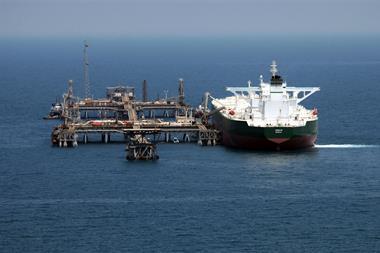The Environmental Liability Directive is creating waves throughout Europe, but some have concerns that its ethos remains misunderstood
When it comes to environmental liability, there is a tendency to focus too much attention purely on the Environmental Liability Directive (ELD). “It is important to look at other environmental laws as well,” says ACE’s UK environmental practice leader, Wayne Harrington. While the ELD has provided a lot of regulation clarity, the UK, for example, already had a well-established tradition of environmental regulation before the ELD came along. In other parts of Europe, however, the ELD has introduced a new set of regulations altogether.
What the ELD does do well is focus a lot more attention on the consequences of environmental damage, says Harrington. It is a recognition that perhaps the traditional laws did not go far enough. Environmental claimants no longer have to prove fault or negligence. Instead, the new regime is based on strict liability, so it is easier for stakeholders and the public to hold polluters accountable. Furthermore, the ELD introduces new legal concepts for environmental damage, including compensatory and complementary remediation.
However, there is some confusion about how these potentially subjective concepts will be defined in reality. And how much they are likely to cost. For example, a pollution incident could fundamentally damage the environment but it may not be hugely expensive to put right. On the other hand, how does one put a price on the extinction of a species or the destruction of a natural habitat altogether?
The risks posed by a company to the environment may be the same wherever it has operations but the consequences of pollution are different depending on the jurisdiction – enforcement is in the hands of the local environmental authority, which means there are huge differences between each member state (see map above). Every place in Europe has legal nuances or types of legal defences that are either permitted or not. So far there have not been many cases to provide clarification of these matters.
Resourcing is another issue that regulators are struggling with. As public bodies reduce staff numbers, it is difficult for them to enforce rules as strongly as before. There could also be trepidation from governments to enforce environmental rules too strictly because of the tough economic climate. As witnessed in Hungary recently with the toxic sludge spill, governments don’t wish to put a company out of business.
Protect yourself
Fortunately, companies are more aware of their environmental responsibilities than ever before. But the trend in the corporate sector towards behaving more ethically and responsibly is slow.
“While companies may be more aware of environmental risk, they remain confused over the consequences,” says Harrington. “It is difficult for companies to understand clearly what the regulators will do if they are caught polluting. Or they may not be aware of what to do if they are caught or how to protect themselves financially against those consequences. Companies that pose a risk to the environment should be cash reserving adequately.”
A lot of companies cannot afford to assess their environmental risks, let alone pay a premium to transfer it. Others choose not to. In Scandinavia, the corporate insurance manager for truck, bus and engine maker, Scania, decided to seek an alternative form of insurance protection. “We don’t buy a specific environmental insurance policy,” says Martin Sijmons. “We prefer to extend the coverage of our general liability policy to include sudden and accidental pollution.” He says the emphasis is on risk avoidance rather than risk transfer.
New prominence
The goal for the insurance industry is to eventually see environmental insurance viewed in the same league as other major classes, such as property or directors’ and officers’ (D&O) insurance. Harrington hopes it will become a major new class of insurance but he knows this will take time.
Risk managers need to be aware of their risks and the potential consequences that can occur if something goes wrong. Large corporates have picked up the issues quicker than most, but some don’t have a choice in the matter as they are subject to financial reporting requirements that dictate they have to disclose their environmental risks. Others have a less impressive stance.
But, in the current economic climate companies may be unable to pay if the consequences of environmental pollution are severe. For these businesses, preparing appropriately in advance could be the difference between life and death. SR
The effects of the ELD across Europe
UK: The ELD has added a substantial layer of liability. Previously, people were only concerned with traditional remediation costs, such as removal of pollution; now complimentary and compensatory remediation costs can be levied as well.
Germany: Environmental law is mostly governed by federal acts. But administering and enforcing the law is left to the 16 states. It is one of the hardest markets to find environmental insurance in due to this patchwork of regulation.
France: The government transposed the ELD in August 2008, but there is no legal obligation to buy financial security against environmental risks. Companies are realising that their exposure and therefore their insurance needs have increased, says ACE continental Europe manager of environmental risk Dorothée Prunier.
Scandinavia: Not all companies choose to buy a specific environmental insurance policy. “We would like to prevent rather than insure,” says Swedish truck maker Scania’s corporate insurance manager Martin Sijmons. He doesn’t think the products exist for his company’s requirements. “We have to buy environmental cover in some markets, like Spain. But the ELD has not had much of an impact in Sweden.”
Spain and Portugal: A dam breach at the Boliden mine near Seville in 1998 led to one of the country’s worst environmental incidents. It has since adopted the most stringent approach to the implementation of the ELD. Portugal introduced mandatory financial protection against environmental risks in January 2010.
Eastern Europe: Environmental liability in Eastern Europe is “a bit of a mess”, says chair of the environmental working group for Ferma Pierre Sonigo. Insurers aren’t touching the risks there, he says, because there are a host of facilities with poor safety records and environmental problems. But it is a concern that is likely to receive renewed attention following the toxic spill in Hungary on 4 October 2010.
Mandatory insurance for Europe?
Following the Hungarian toxic sludge disaster and the Deepwater Horizon Gulf oil spill, the European Commission has been encouraged to reconsider its position on mandatory insurance protection for environmental liabilities. The Commission is currently considering a EU-wide compulsory scheme for all oil companies.
As it stands, financial protection is compulsory in only European countries. Ferma, representing the interest of risk managers in Europe, is against the idea and any type of mandatory insurance for large risks.
“We do not think there should be mandatory insurance,” says chairman of Ferma’s environmental liability working group, Pierre Sonigo.
“We feel there are sufficient solutions for the oil industry in the commercial insurance market, so there is no need to make it mandatory. As a principle, we are against mandatory insurance, because we think this increases prices and removes competition.
Other options, such as self-insurance, disappear for risk managers if the government imposes mandatory insurance protection, says Sonigo.
“The EU wants to add security by creating guaranteed security schemes to pay for environmental damage, because it is the government that ultimately will have to pay. But this is not the way to do it.”



















